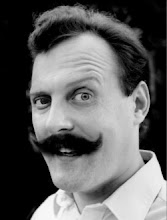Filmmaking - Vintage Movie Camera For Film Production?
Patents from 1926 adorn the side of a classic Mitchell studio camera, legally protecting the design of its internal gears and sprockets.
1926 was a long time ago, and that camera is an antique. Could it still be used, in today's modern film production?
Yes, and in fact, many are. No modern movie camera is more precise than those classic pin-registered film movements. They really knew how to build them in 1926, and the cameras still work, millions of feet of film later.
To get a particularly difficult shot, it's not uncommon for visual effects cameramen to dust off a trusty 35mm Mitchell GC, NC, or BNC film camera. To alter time, fast or slow, just add a stop-motion or high-speed motor.
Build the camera on its rig, set the focus, aperture, shutter, and tachometer. Now you can shoot a cartoon, stop- or slow-motion movie sequence. Just like movie cameramen have been doing for a century.
There is much recent talk about new digital movie cameras. Filmmakers line up at seminars and shows, just to see one. Nevertheless, digital cameras still only provide 6% of the footage for feature movies. 94% of movies still are on film.
Digital standards are still evolving, and reliability and ruggedness are still hit-or-miss for digital cameras. Film cameras are tested and reliable, at 10k of resolution, compared to digital's 2-4k.
Hollywood Manuals is a website that offers out-of-print and hard-to-find technical manuals for vintage movie cameras and projectors.
Arriflex, Bell & Howell Eyemo, Cameraflex / Cineflex, DeVry, Mitchell BNC, GC, HS, and S35R vintage movie cameras and projectors are among those represented.
film school
filmmaking
film financing
film production
digital filmmaking handbook
© 2008 Sam Longoria, All Rights Reserved
Thursday, November 13, 2008
Friday, November 07, 2008
Film Production - Mini DV or HD Camcorder? Make your Independent Movie!
Film Production - Mini DV OR HD Camcorder? Make Your Independent Movie!
Filmmaker Anthony Watkins shot his two feature movies (2003's "Counseling Day," and 2008's "Mall Robbers") on Super 16mm film, but admits other people's movies might get done faster if they'd use readily-available digital movie gear, in Mini DV or HD camcorder formats .
Anthony has bought and/or built camera dollies and film equipment, to support and move his film cameras through their shots and sequences. So he appreciates the new digital formats can be lighter and less unwieldy for transport and use.
Anthony loves the look of film, and Super 16mm is cheaper and easier than industry-standard 35mm film, so that's what he shoots.
Once shot, Anthony's film is digitally scanned into computer files, which he edits on his Apple G5 workstation, with his Final Cut Pro HD editing software.
Anthony's veteran comments and information are included on his "Making Of" DVD, included in his new feature film "Mall Robbers."
You can learn film production and where to rent movie gear and film equipment, and how to make your own indie film.
Discover secrets of film financing, as you secure your own film funding for your independent movie.
"Mall Robbers" was shot in 35 nights, in a suburban mall in Washington State. A wild slapstick comedy, about three groups of witless robbers, who break into the same mall on the same night. Matching wits (or lack) with them is the alert, uniformed Mall Security Force.
Laugh your head off, and discover how Super 16mm or 35mm film, or Mini DV or HD camcorder digital formats, can help you make your own independent movie.
film school
filmmaking
film financing
film production
digital filmmaking handbook
© 2008 Sam Longoria, All Rights Reserved
Filmmaker Anthony Watkins shot his two feature movies (2003's "Counseling Day," and 2008's "Mall Robbers") on Super 16mm film, but admits other people's movies might get done faster if they'd use readily-available digital movie gear, in Mini DV or HD camcorder formats .
Anthony has bought and/or built camera dollies and film equipment, to support and move his film cameras through their shots and sequences. So he appreciates the new digital formats can be lighter and less unwieldy for transport and use.
Anthony loves the look of film, and Super 16mm is cheaper and easier than industry-standard 35mm film, so that's what he shoots.
Once shot, Anthony's film is digitally scanned into computer files, which he edits on his Apple G5 workstation, with his Final Cut Pro HD editing software.
Anthony's veteran comments and information are included on his "Making Of" DVD, included in his new feature film "Mall Robbers."
You can learn film production and where to rent movie gear and film equipment, and how to make your own indie film.
Discover secrets of film financing, as you secure your own film funding for your independent movie.
"Mall Robbers" was shot in 35 nights, in a suburban mall in Washington State. A wild slapstick comedy, about three groups of witless robbers, who break into the same mall on the same night. Matching wits (or lack) with them is the alert, uniformed Mall Security Force.
Laugh your head off, and discover how Super 16mm or 35mm film, or Mini DV or HD camcorder digital formats, can help you make your own independent movie.
film school
filmmaking
film financing
film production
digital filmmaking handbook
© 2008 Sam Longoria, All Rights Reserved
Subscribe to:
Posts (Atom)
